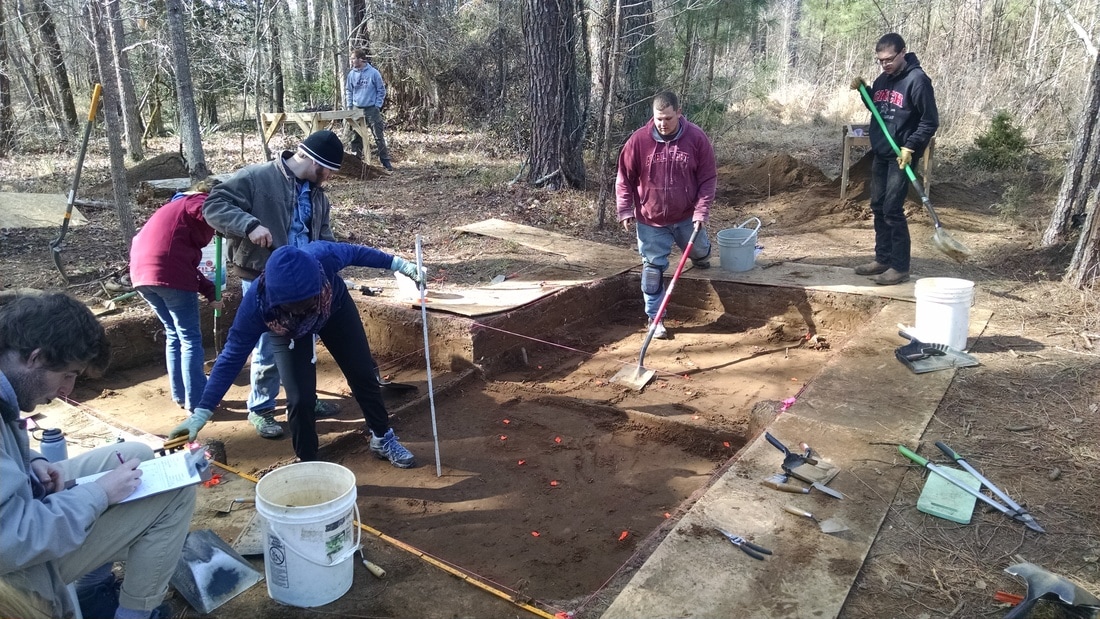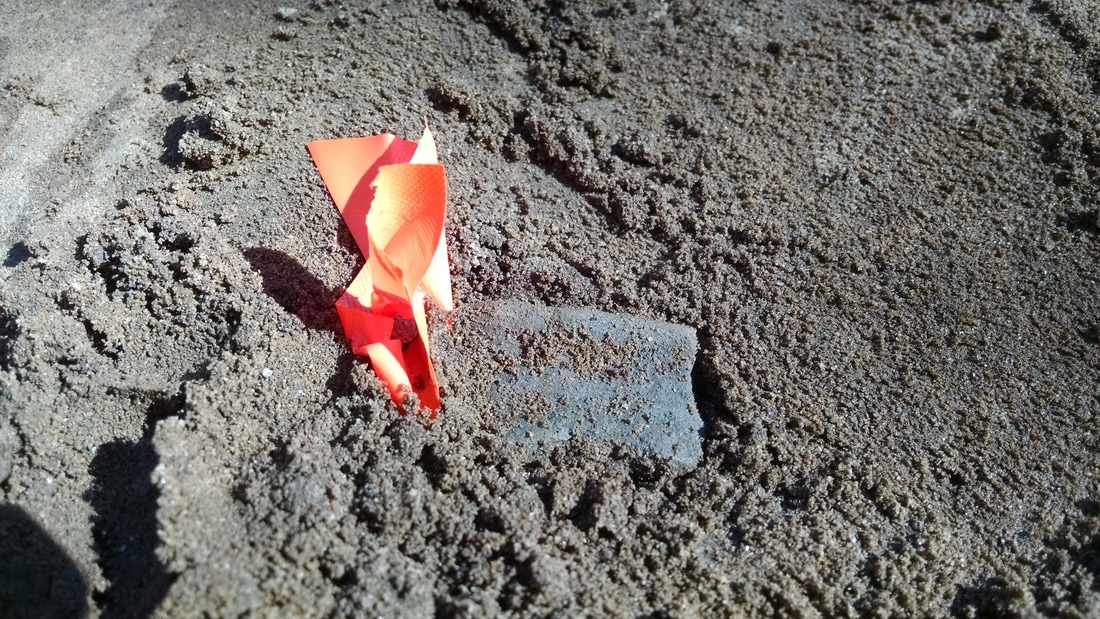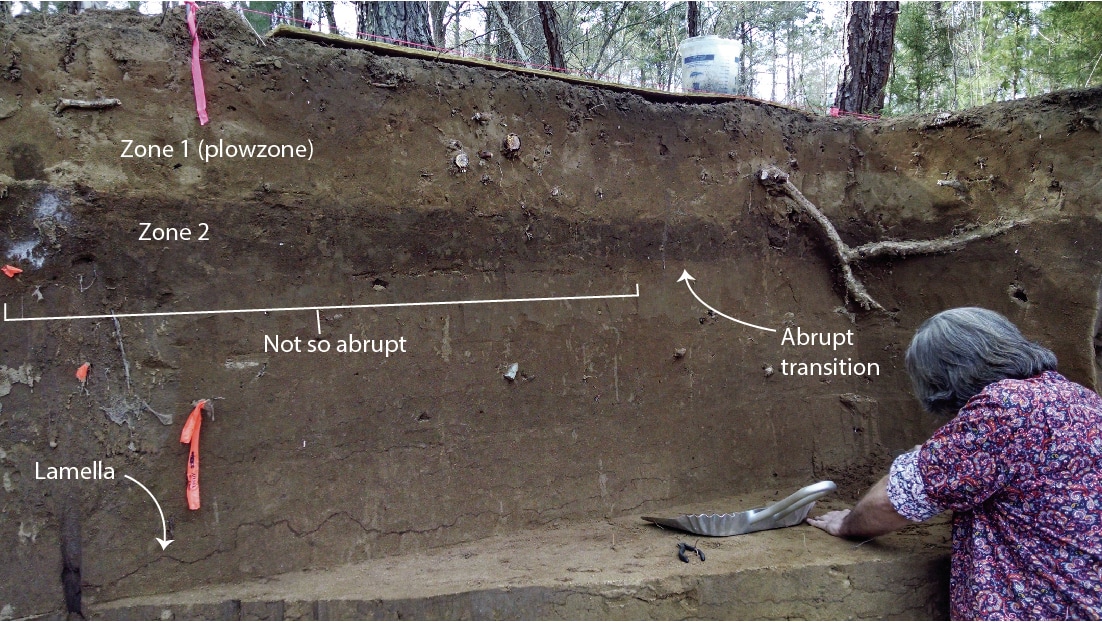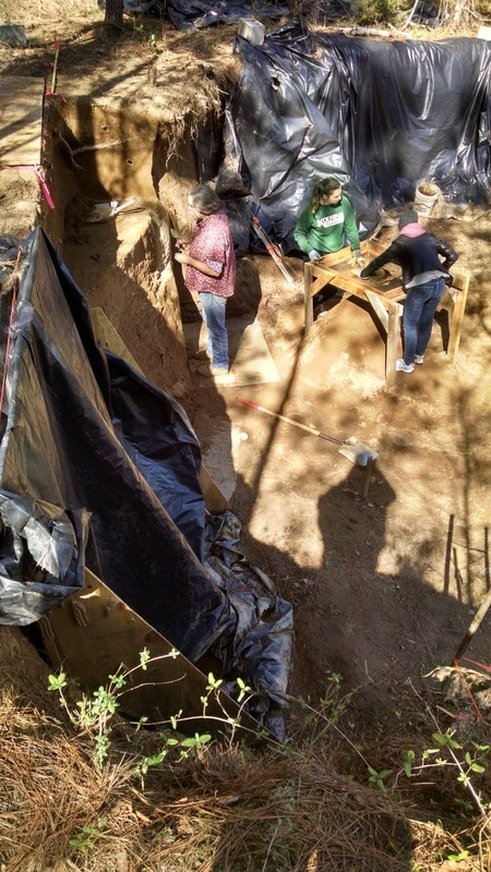As I wrote last week, my hope for this Friday was that we would end the day being able to say with some confidence whether Zone 2 (the dark zone beneath the plowzone) is a buried plowzone or an intact cultural deposit. Unfortunately, I still don't have definitive evidence either way. Based on the day's work, however, I'm now leaning more toward the idea that we are, in fact, dealing with an unplowed prehistoric deposit.
If Zone 2 is a buried plowzone, we'll expect to see some evidence of plowing (e.g., plow scars or plow-truncated features) at the interface between the base of the zone and the underlying sediments. We're not to that interface in any of the block units yet, however.
Because I don't know what Zone 2 is, I had the students excavate it using a shovel-skim/piece-plot methodology. Shovel-skimming involves using shovels to carefully remove thin (e.g., 1/4" to 1/2") slices of sediment. This technique allows you to leave larger artifacts in place as you find them and keep an eye out for changes in sediment color and texture that could be associated with cultural features such as hearths, pits, or postholes. I had the students leave artifacts in place as they encountered them, marking them with a piece of orange flagging tape stuck in the ground with a nail. When the floor became too cluttered with artifacts, artifacts were piece-plotted (mapped individually) and removed. All the sediment that was removed with shovels was passed through 1/4" screen to catch smaller artifacts that weren't detected during the shoveling.






 RSS Feed
RSS Feed
